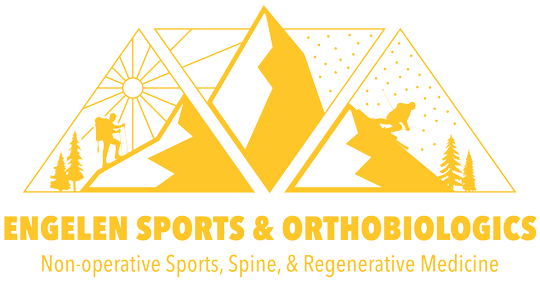PRP for Tendinopathy
As discussed previously, Tendinopathy is a chronic injury to a tendon as a result of a degenerative process rather than inflammation. Current treatment options include eccentric strengthening programs, topical glyceryl nitrate, Extracorporeal Shock Wave Therapy (ESWT), Platelet Rich Plasma (PRP), Ultrasound guided Percutaneous needle tenotomy (Tenex), or Open Surgical Tenotomy.
The use of orthobiologic injections for the treatment of tendinopathy has been increasingly studied and utilized. The most common type of orthobiologic utilized is Platelet Rich Plasma or PRP. PRP is derived from a sample of the patient’s own blood (approx 60-120ml). The blood is spun down in a centrifuge to separate out the platelets, WBCs, RBCs, and plasma. The therapeutic portion contains plasma with a higher concentration of platelets. Platelets are the first responders in the body to promote healing. Platelets secrete substances called growth factors and other proteins that regulate cell division, stimulate tissue regeneration, and promote healing.
The scientific rationale for PRP therapy is to inject concentrated platelets at sites of injury to initiate tissue repair via release of biologically active growth factors. In vitro studies have demonstrated that PRP increases cell proliferation and differentiation of tenocytes along with type 1 collagen production thereby slowing or reversing the tendinopathic process. In other words, injecting PRP into these regions creates an inflammatory response which signals the body to aid in the healing of the tendon.
The application of orthobiologics in the treatment of tendinopathy is an area of emerging research without broad consensus. The assessment of clinical effectiveness is complicated by differences in PRP formulation and candidate selection criteria. There are studies demonstrating its effectiveness in treatment of rotator cuff tendinopathy, common extensor tendinopathy (tennis elbow), patellar tendinopathy, gluteal tendinopathy, proximal hamstring tendinopathy, achilles tendinopathy, and plantar fasiopathy. Many studies have outlined the safety and effectiveness of orthobiologics for the treatment of tendinopathy but they are still not considered to be standard of care.
Orthobiologics can be effective but must be utilized after thoughtful discussion with a sports medicine physician with careful consideration of the condition and after thorough diagnostic evaluation. Education is key to ensuring PRP is the right option for you. Not all PRP is the same and unfortunately there are some high priced sham systems being offered. Make sure to ask questions regarding the platelet concentrations (at least 7-8x concentration), leukocyte rich vs leukocyte poor, and if ultrasound guidance is utilized to ensure the PRP gets to the right location.
